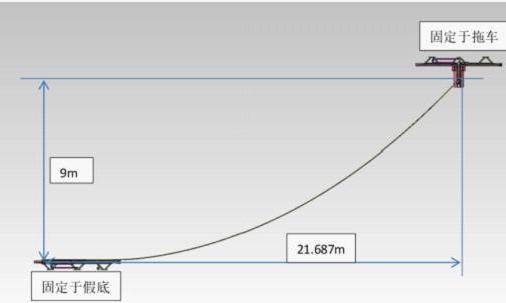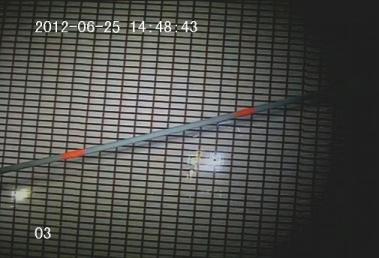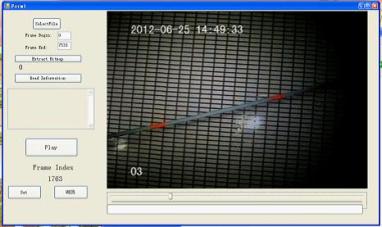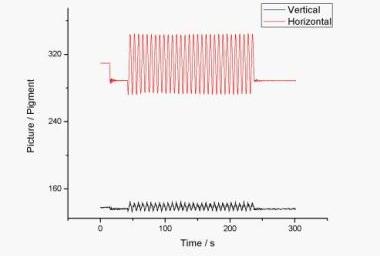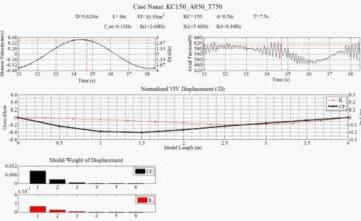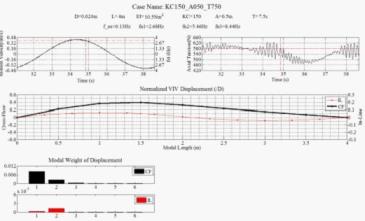|
||||||
In the catenary riser experiment, 25 Optical fiber strain gauges have been applied to decide the riser's displacement, and several underwater camera were equipped to observe the motion of the riser. And during the experiment, I observed that several videos yielded by underwater cameras could be a perfect source to apply pattern recognition technology in order to detect the X, Y motion of the riser. And here is one picture of the riser(left) and the result picture processed by my algorithm(The white point is the detective point).
After the successful test of the algorithm, I conducted it into a beta version of the image processing software. The left of the following pictures is its GUI, and the right is the result yielded by my software. And this rudimentary software is now being successfully used in another experiment: Fish Farm
One critical problem of this experiment is to determine the motion of the whole riser, and the following is a sample of the result(Time Domain).
And I try to apply the ifem(inverse finite element method) put forwarded by Dr. Philippe Maincon to identify the VIV load by the experimental data. One challenge lays here is that because of the change of the tension of the riser, the stiffness matrix of the linear equations can not remain the same, which increase the difficulty of the problem. At sametime, in our series of experiments, several untraditional phenomena were observed, such as the large axial force fluctuation(in several conditions of SCR experiment, large axial pressure were observed), large magnitude of the in-line vibration(currently our mass ratio is about 1.53 < 6) and asymmetric vibration along the flexible cylinder(when reduced nominal velocity reach a "transition region", one side(x = a) of the flexible cylinder experiences a severe vibration while the magnitude of the corresponding area(x = l-a) are expectedly small. And this phenomenon concides with the result of the rigid cylinder experiment mentioned in the publication, "Three-Dimensionality of Mode Transition in Vortex-Induced-Vibrations of a Circular Cylinder" by Dr. Franz S. Hover, Dr. Joshua T. Davis and Dr. Michael S. Triantafyllou) . And now I am interested in the analysis of the axial force fluctuation due to VIV and its contribution to lateral response. go see: |
